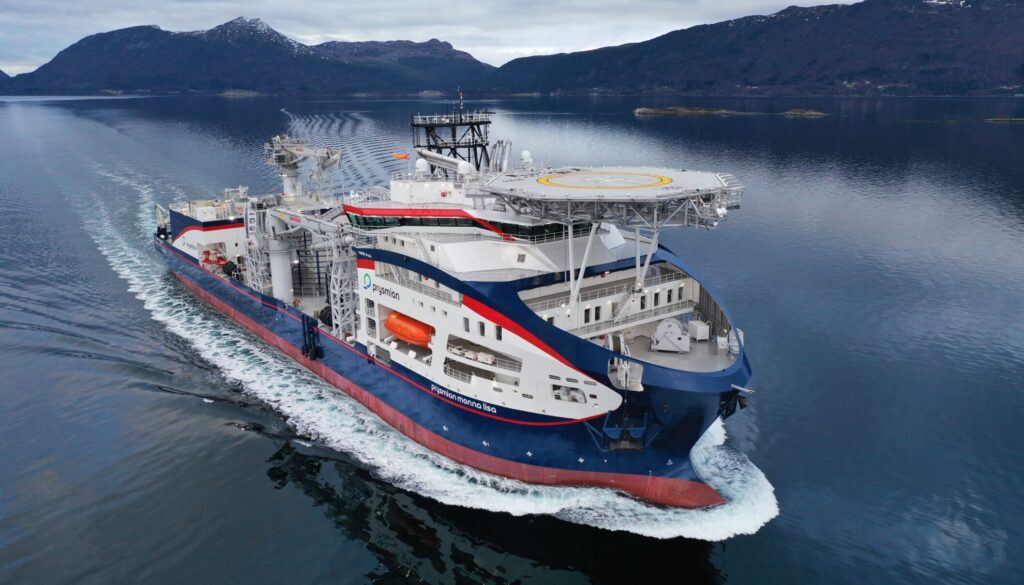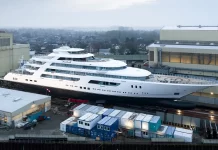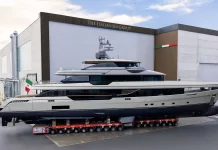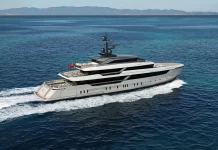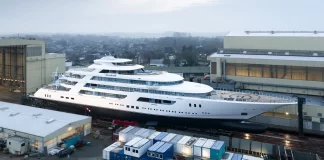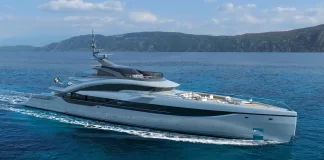Romania continues to solidify its position as a global leader in specialized shipbuilding with the launch of Alessandro Volta, the newest and most advanced cable-laying vessel ever built for Prysmian Group.
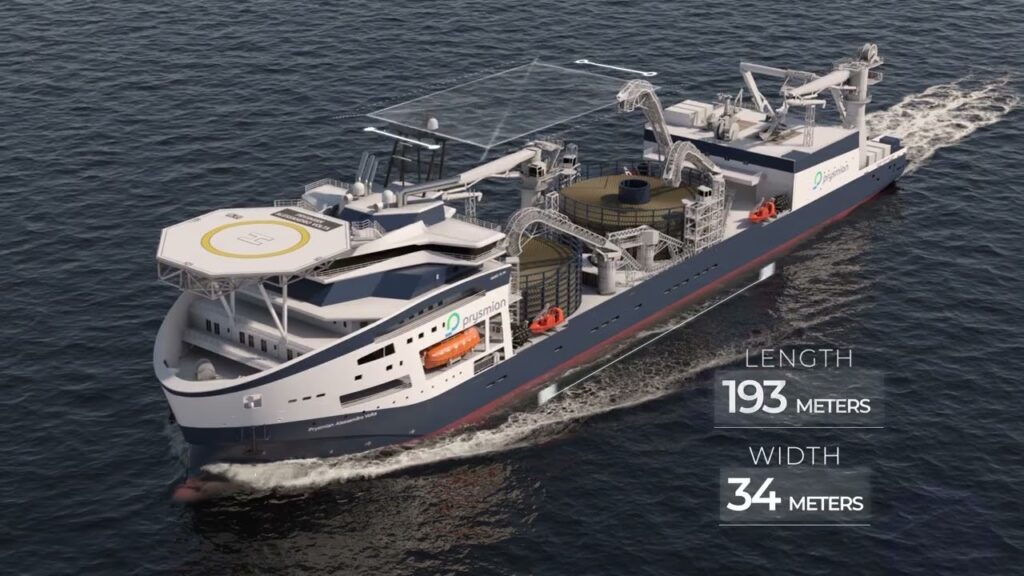
Following the success of its predecessors — Leonardo da Vinci and Mona Lisa, also built in Romania — this latest vessel takes technological innovation and capability to a new level.
The Leonardo da Vinci and Mona Lisa vessels already hold the distinction of being the only ships in the world capable of laying submarine cables at depths of up to 3,000 meters. With lengths of 171.1 meters, beams of 32.4 meters, and a loading capacity of 17,000 tons of cable, these vessels have set global benchmarks in the subsea cable-laying industry.
Now, Alessandro Volta raises the bar even higher. Measuring 192.8 meters in length and 34 meters in width, it features three massive carousels capable of carrying up to 19,000 tons of cable—a record-breaking capacity that will allow it to handle longer and more complex installations than ever before.
While the vessel’s cranes and systems are optimized for depths of up to 1,500 meters, it is designed for unparalleled stability and precision in shallow and turbulent waters. Equipped with three ABB Azipod thrusters at the stern—each generating 4 MW and capable of rotating 360 degrees—the ship can dynamically adjust its propulsion for maximum stability during delicate operations. Two retractable Azimuth thrusters at the bow, each with 2.4 MW, and two tunnel thrusters of 2.5 MW each provide additional maneuvering power and lateral propulsion when needed.
The vessel runs on diesel-electric generators complemented by 3 MW of onboard battery power, ensuring efficiency and reduced emissions while maintaining life support and operational autonomy for up to 90 days at sea. Accommodation is provided for a crew of 130 people.
This new generation of cable-laying vessels is in extremely high demand, driven by Europe’s accelerating investment in renewable energy and offshore wind power. Prysmian’s Romanian-built fleet has already executed major global projects, including the Denmark–United Kingdom power interconnection, laying high-voltage direct current (HVDC) cables that efficiently transmit electricity over hundreds of kilometers underwater with minimal loss.
As Europe expands its offshore wind infrastructure, such vessels are critical to connecting offshore farms—often located 100–200 kilometers from shore—to mainland grids, and linking island nations such as the UK and Ireland to the continental energy network.
Built at the Vard Shipyard in Tulcea, Alessandro Volta represents an investment of €350 million, alongside a smaller companion vessel also under construction in Romania. After initial construction, both vessels will be towed to Vard facilities in Norway for final outfitting with advanced digital systems.
This achievement underscores Romania’s growing industrial capability and its crucial role in supporting Europe’s transition to a renewable, interconnected energy future.
—
Photo: Mona Lisa cable-laying vessel, also built in Romania for Prysmian Group
Rendering: Alessandro Volta, launched today in Romania


